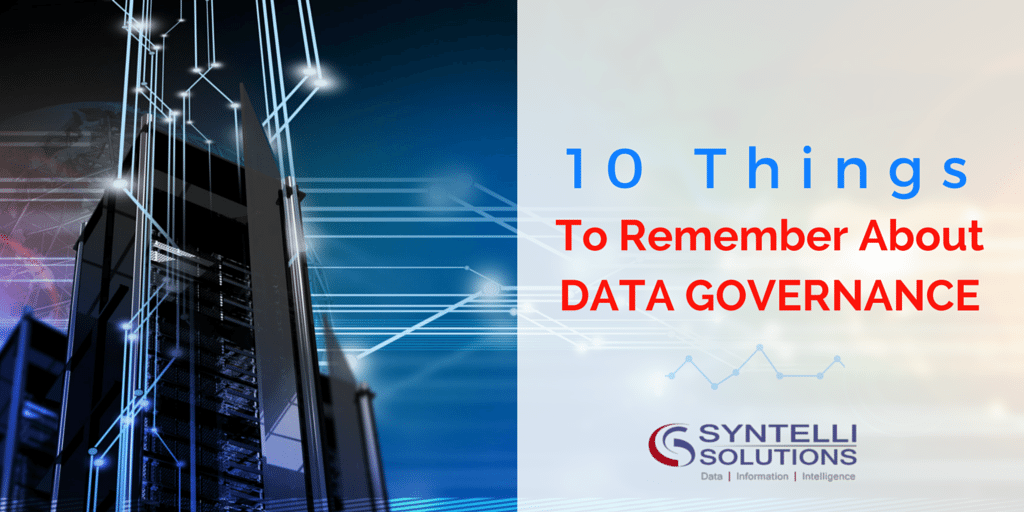What Is Data Governance
Data governance is one of the many buzz words we encounter these days. One might argue that it’s hype, but I don’t think so. It’s top of mind for many good reasons, some of which we mention below.
Data governance is an umbrella term, which refers to the methods, tools and standards we use to maximize data availability, usability, integrity, and security. A sound data governance program is essential. Without it, you can never be sure that decisions you make are based on solid evidence.
Ideas For Data Governance Principles
The notion of data governance has been around for years, and it still creates confusion in the minds of business users. Here are some ideas, which we hope are helpful for those of you who plan to step up and establish or update data governance principles at your organization.
- Data governance isn’t an option. It’s essential.
You can’t get consistent, reliable and repeatable data without data governance. A central role of data governance is to ensure that metrics are defined, handled and interpreted consistently across organizations. - Data governance guides all other analytics activities.
Data governance informs everything from analytics software implementation to page tagging to report design. Its major function: ensuring that there is clear alignment between Web analytics tactics and strategic business goals. Devote the time, effort and resources needed to do it properly. - Data governance is a process, not a series of tasks. Data governance is a set of best practices or principles, which help to ensure that you create and maintain good quality data. It’s an active, ongoing and repeatable process, which continues to evolve.
A well-run data governance process ensures that you have reliable and consistent data sets to analyze and make management decisions with. It consists of regularly scheduled audits, reconciliations, compliance reviews and quality control activities. - Data governance is simple in principle but complex in execution. Yes, data governance is a set of data handling practices, but you can never really erase the human element.
It’s also a set of carefully defined responsibilities, which involve change management and compliance. An excellent indicator of this complexity comes from a revealing article, which lists “a clear and documented process for resolving disputes” as a critical success factor! - Data governance methods support compliance efforts. A well-run governance effort provides the audit and documentation processes you need to show who has gotten access to and queried the data, what has been done with it since it was created and enforce data management policies consistently through time.
- You can’t buy data governance. It isn’t a tool.
There are many tools that can help you store and communicate defined business rules, measure data quality and identify compliance issues. For example, Hadoop-based tools can accelerate data discovery tasks in even large sets of structured and unstructured data. Tableau can help you analyze and visualize governance-related data with very little effort.
But an all-in-one, off-the-shelf application that provides this speed, agility and diverse processing is not on the market. And that makes sense, because data governance is really about your company’s unique way of organizing data, its processes and the responsibilities that you assign to analysts and users. - Successful data governance is based on proactive methods and attitudes. One of the changes in attitude that is driven by data governance is to move away from a reactive to a more proactive approach to data quality. Make sure to build in and document methods that resolve data quality problems as soon as they occur.
- Don’t forget importance of data preparation in the overall governance process.
One of the most important aspects of data governance for analytics are the policies that define, document and communicate the data preparation process. Be sure that these essential tasks get attention they deserve. - Successful data governance requires breaking down silos.
Companies that move to a data governance model often must break down a siloed organization that uses functional processes. The new way of working can be achieved only when processes are aligned among different functions. Investment in change management is extremely important. - Make the most of your IT talent. They have a lot to offer.
Your IT staff can handle many governance-related tasks, such as establishing security practices, assessing risk, and designing data management policies. The list of potential contributions is really much longer—put them to work
- Data governance isn’t an option. It’s essential.
Need help with your organization’s data governance? Contact one of our expert consultants to find out how we can help!



